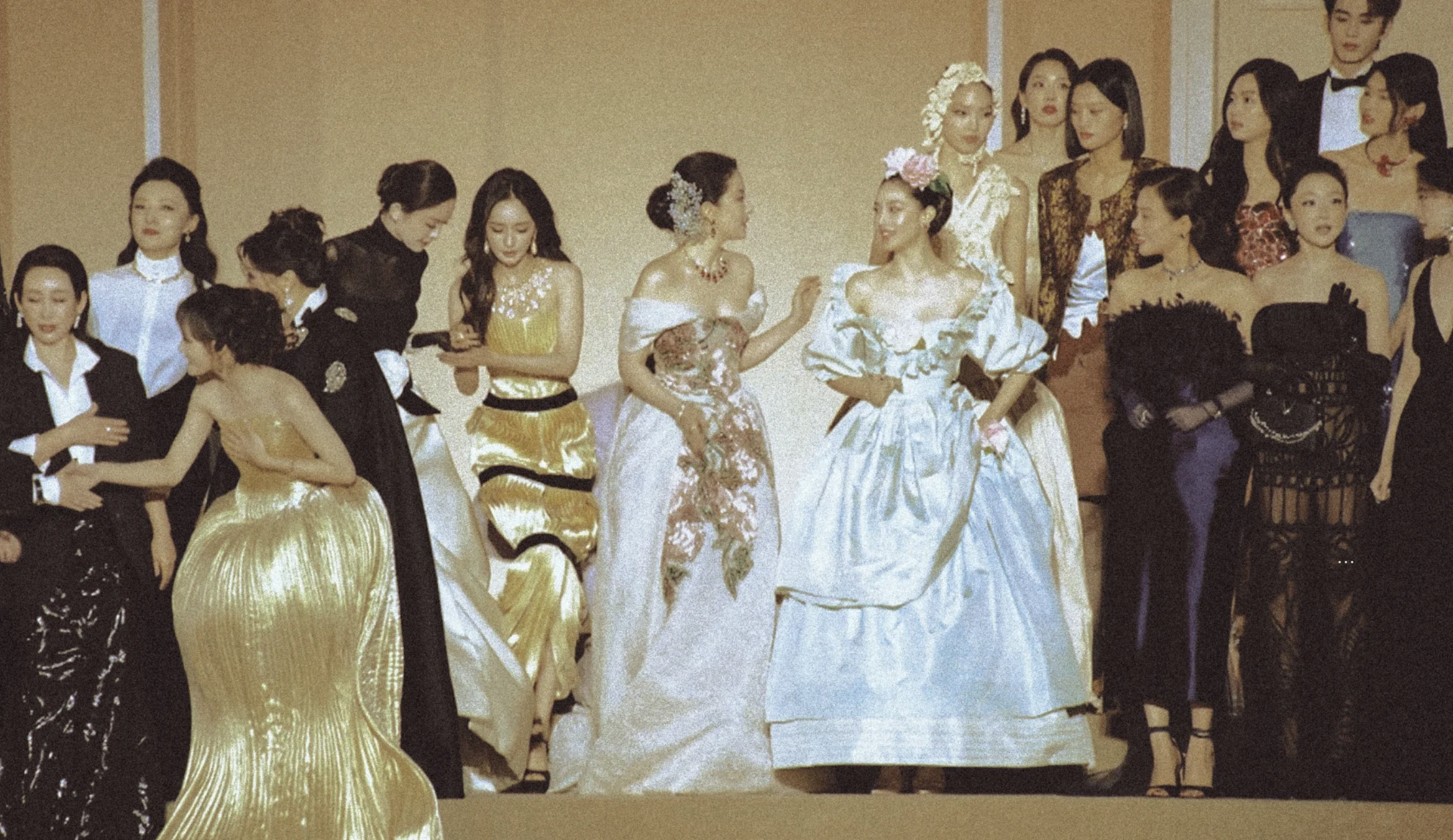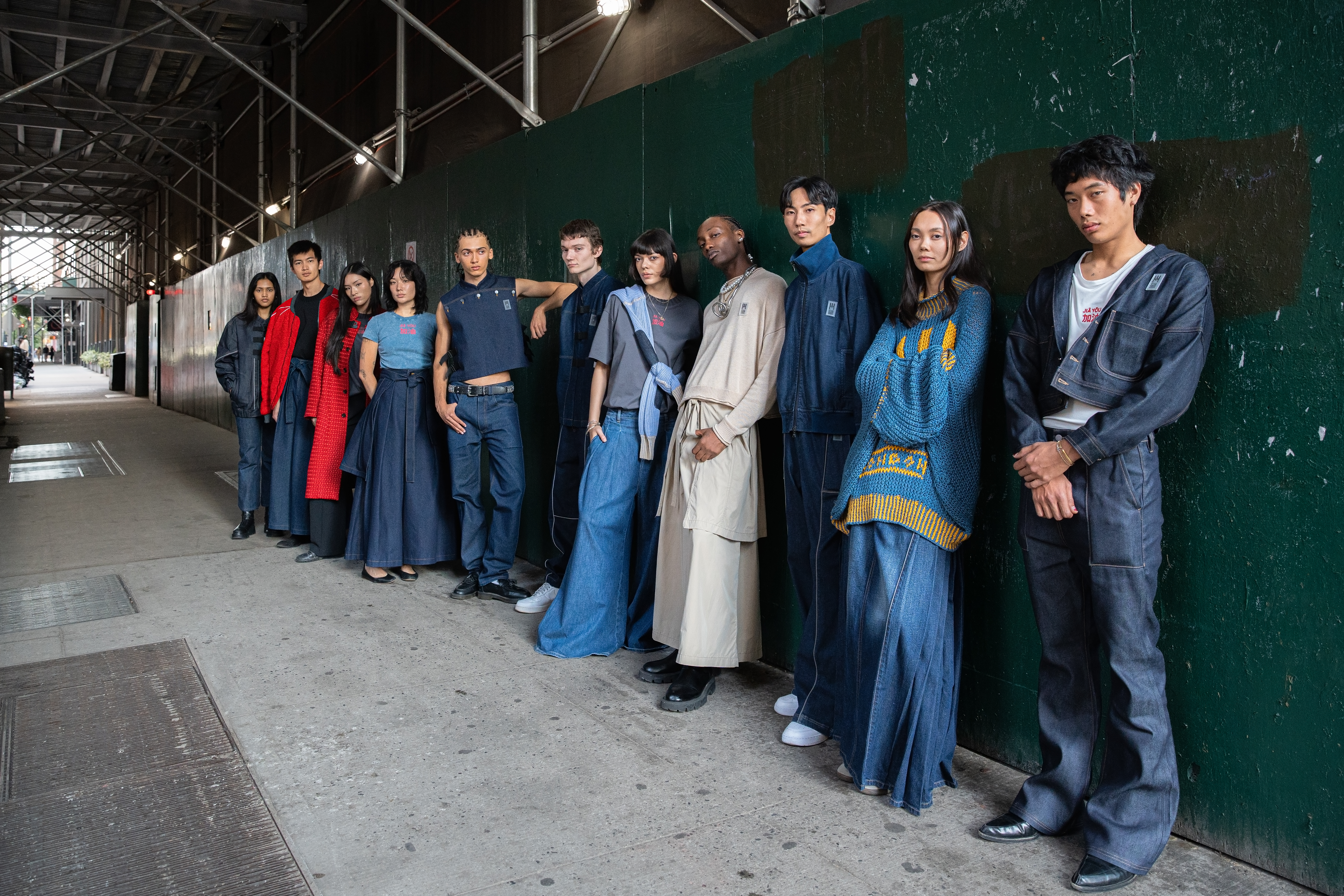China Designers is a biweekly series that showcases the wide spectrum of creativity in Chinese fashion design. From small designers to big brands, these names are changing the connotations of “Made in China,” one collection at a time. Write to us if you have a suggestion or submission.
Reduce, reuse, recycle. For many, these words were drilled into our heads from a young age as necessary to do our part in saving the planet.
But designer Tong Jianlong, whose label Lowe Tong is made entirely from upcycled and discarded materials, believes that lasting change needs to come from the top — and that as part of one of the world’s most polluting industries, fashion designers have an obligation to change the way people think.
Hailing from Jilin province in northeastern China, Tong recently graduated from Beijing Institute of Fashion Technology, majoring in fashion design and innovation. The young designer’s work earned him a place as a womenswear finalist at the Redress Design Awards, a leading platform for sustainable fashion.

Below the surface of Tong’s designs is a skillful array of multiple sustainable fashion design approaches.
Using upcycling and reconstructed fabrics from scraps and secondhand sources, all of Lowe Tong’s garments are multifunctional. Most use detachable elements as well to increase their versatility and value — a skirt becomes a cape, while pants unfold to become a dress. Arguably the centerpiece of his collection — a black “trenchcoat” with contrast stitching — can become a vest, dress, and jacket as you unfasten different panels, and is reversible to boot.
A second skirt is made from leftover end of roll fabrics, while a shirt made from secondhand clothing is clasped with a belt woven together from bunches of unsold shoelaces. Tong even brought his family members into the process, turning his uncle’s unwanted clothes into a full outfit.
The young label head says that for inspiration he looks largely to the work of Japanese designers, known for their knack for geometry balanced with wearability and minimalism. He cites the key figures of Japanese casual luxury — Comme des Garcons, Junya Watanabe, and SACAI — as his ideals.
But Tong takes pride in his identity, and is also concerned with creating something that reflects modern China — a sentiment echoed by many of his design peers. “We need to draw from our cultures, integrate these traditions with our designs, and build a future upon them,” he says.
Related:
 China Designers: Why This Designer Wants to “Make China Lit Again”Fabric Porn’s first two seasons come from designer Zhao Chenxi’s observation that “Chinese people are lacking in their own cultural confidence”Article Mar 17, 2020
China Designers: Why This Designer Wants to “Make China Lit Again”Fabric Porn’s first two seasons come from designer Zhao Chenxi’s observation that “Chinese people are lacking in their own cultural confidence”Article Mar 17, 2020
Yet while fashion labels from China — particularly independent designers — are becoming known worldwide for their creativity, Tong is in a minority in integrating sustainability to his label from the start. He says he was lucky that his former professor in Beijing is a respected specialist in the field; sustainable fashion is largely still seen as a novelty among his peers, and there are still multiple barriers — both within and outside China — in it reaching the mass market.
“Some of these [bigger] clothing companies pay very little attention to how clothing impacts society,” Tong observes. “Their corporate development lacks planning. Blind expansion reduces the rate of product usage, and results in a blind cultural following [of buying and wasting].”
Second to oil, textile production is the world’s most polluting industry, and China is one of the leading culprits on both the production and consumption side. Nearly 65% of the world’s clothing is manufactured in the Chinese mainland, according to 2018 statistics, but nearly half of the textiles it produces yearly end up in landfills. It’s estimated that Chinese consumers also discard roughly 26 million tons of garments every year.

Designer Lowe Tong
When talking about his commitment to sustainable fashion, Tong frequently refers to it as a “responsibility,” referencing the role that designers themselves have to inspire change where corporations and fast fashion cannot.
“Designers are the bridge between industry and market. We need to assume this social responsibility.”
But among consumers, he observes that there is still a lack of awareness and interest in sustainable fashion: “To be honest, I think it hasn’t increased much. There aren’t many sustainable products available in the current market, and consumers today have little knowledge about them.”
He adds that one major hurdle is getting consumers to trust the products, since sustainable fashion labels such as his largely depend on repurposing and recycling used clothing. Though apps such as Xianyu — owned by Chinese tech giant Alibaba — are driving secondhand goods consumption in China, the market still faces tight legislation and an overall hesitancy from consumers about “pre-loved” goods. “Some consumers are concerned about the sources of the used clothes and the hygiene — they don’t accept it entirely,” says Tong. “Therefore, it’s a bit hard to mass produce and sell.”
But he does feel that things are beginning to change, and that in the near future, sustainability will become a new lifestyle for young Chinese people — if only out of necessity.

Though it’s not hard to picture Lowe Tong on department store hangers and in boutiques, the designer says that’s not in the cards for him. He hopes to become an educator, and impart some of the things he learned onto the next generation of Chinese creatives.
“Adopting a sustainable lifestyle doesn’t just happen overnight,” he says. “In order to have more people embrace it, we have to start with the basics.”
All images unless otherwise stated: courtesy Lowe Tong
Header image: courtesy Redress
















